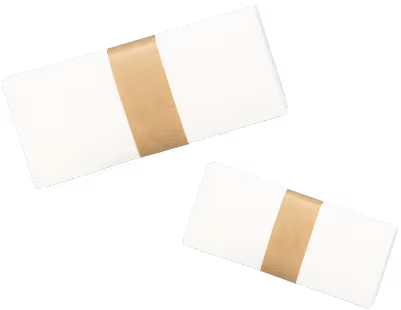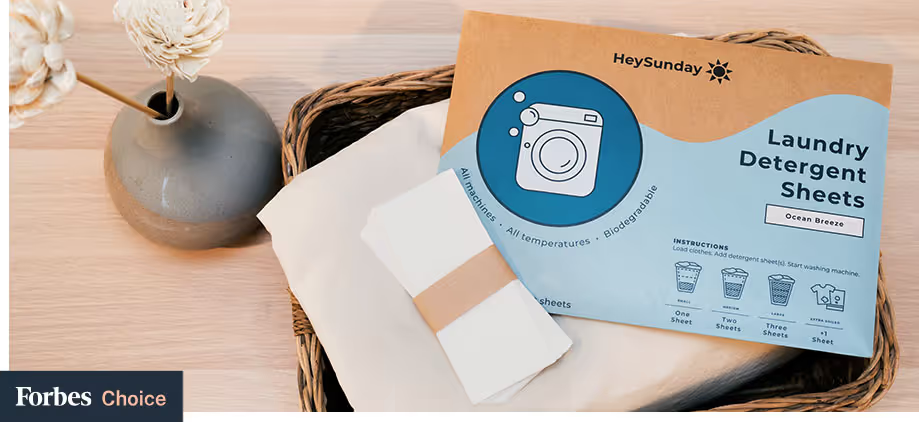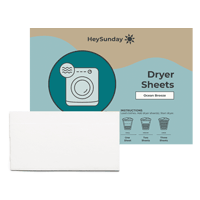
How to Wash Pillows: Expert Cleaning Tips to Extend the Life of Your Pillow
Resting your head for the night on a soft, clean pillow is not only one of life's great pleasures but also important for your health. Pillows accumulate dust mites, dead skin cells, sweat and drool, and other things that can damage your skin, worsen allergies, and affect your sleep. For that reason, washing them once every several months is essential.
That said, worrying about damaging your pillow can make the process feel daunting. We're here to demystify pillow-washing by teaching you thoroughly researched and proven steps to maintaining fluffy, clean pillows.
What You’ll Need to Wash Pillows
While the proper method for washing pillows differs for foam pillows vs. feather pillows, here are some of the essential materials you'll need for any pillow type.
- Gentle laundry detergent - HeySunday’s laundry detergent sheets are ideal for an effective, fabric-friendly, and skin-sensitive clean.
- A soft-bristled brush and spot remover for spot cleaning.
- Spot treatment like white vinegar or a natural dish detergent mixed with baking soda for natural stain removal.
- Dryer balls or clean tennis balls to evenly distribute fluff in the dryer.
- A large container for hand washing. A recently sanitized bathtub is also a viable option.
How to Wash Pillows: A Step-by-Step Guide
We’ve included six core steps. To cover all pillow types, we will look at both hand washing and washing machine methods.
Step 1: Prepare Your Pillows
Check the Care Label
As each pillow is different, always follow the instructions on the care label of your individual pillow to be sure. However, the general rule is that while running foam pillows through the washing machine will damage the stuffing permanently, down pillows or down alternative pillows made with synthetic fibers should wash well on the gentle wash cycle of a front or top-loading machine that does not have an agitator (the tall spindles in the center of your drum).
Remove Pillow Covers
To ensure a thorough cleaning, remove pillow covers before washing your pillow. Pillow covers should be washed as frequently as your sheets and comforters according to their specific care instructions. For memory foam pillows, using an additional pillow protector under your pillowcase will protect the foam from absorbing dust and oils for longer. Remove and wash these with your pillow cover.
Pre-Treat Stains
Wet the area with warm water, and then apply your natural stain remover mixture to any visible grime. Then, gently use your brush or fold the fabric on either side of the soiled area and rub them together in alternating motions to help the treatment lift the stain.
While this also works on most foam pillows, this method may be difficult for foam pillows with tighter fabric. If you find pinching the fabric of your foam pillow challenging, use a clean rag or towel to rub the treatment into the stain. Rinse the area with the same rag by dabbing it with warm water until clear.
Pro tip: Leave the spot treatment on the stain for 30 minutes to an hour for heavy stains.
Step 2: Use a Washing Machine or Fill a Basin
Although some people prefer to hand wash their pillows, as this is the gentlest option, most pillows may be machine-washed for convenience.
Feather Pillows
To machine wash down, or alternative down, set your washing machine to the gentle cycle using only warm water, as hot water will strip the feathers of their natural oils that are necessary for that fluffy consistency.
Foam Pillows
To wash memory foam pillows, fill a large basin or bathtub with lukewarm water; prolonged exposure to high heat can also stiffen the foam in your pillow. Be sure not to place your foam pillow in the washing machine, as that could permanently damage it.
Step 3: Add HeySunday Laundry Detergent
As a mild detergent is best for a thorough clean that doesn't damage the natural fibers in your pillow's stuffing, we recommend HeySunday laundry sheets, which are gentle on various pillow types but provide an effective clean through our seven-surfactant formula.
Simply place or dissolve one or half of one HeySunday laundry detergent sheet. You want to be careful not to use too much detergent, as residual soap residue can damage down feathers. To be extra sure, you could add an extra rinse cycle without soap to this process.
Step 4: Submerge or Wash Pillows
If you choose to use a washing machine, launder two pillows at a time on the gentle wash cycle to maintain distribution balance and minimize the risk of damage. After the wash cycle, use the spin dry feature of your washer once or twice to get as much moisture out of the pillows as you can.
For hand washing, submerge your pillow in the warm, soapy water and knead into the pillows as you would dough, working out any buildup of dust or grime. Do this a few times before draining the soapy water and thoroughly rinsing your pillow multiple times until the water runs clear.
Step 5: Air Dry or Use Dryer Appropriately
Although you should completely dry pillows to protect against mold or dust mites, first check the care label to learn the appropriate method. If your care label recommends air drying, set your machine to an air-only setting or low heat for more durable pillows, and allow your pillows to be tossed with tennis or wool dryer balls until completely dry.
Step 6: Fluff and Reshape Pillows
After your pillows have been thoroughly dried, you can give them an extra fluff to restore their shape. For down pillows, alternatively, shake them up and down while holding the corners of one side at a time. Foam pillows will fluff better with a chopping or kneading method to ensure even distribution of fluff.
Maintenance Tips to Keep Pillows Fresh for Longer
Although you may only wash your pillows every 4-6 months, there are little things you can do daily or weekly to keep your pillows extra fresh.
- Fluff Daily: To maintain shape, manually fluff or toss your pillows with dryer balls on air dry daily.
- Use Pillow Protectors: For foam pillows that are harder to wash, consider using pillow protectors to shield them from dirt and oils. Frequently wash these pillow protectors with your other linens. You can also vacuum the foam to remove dust.
- Regularly Air Out Your Pillows: To keep your pillows fresh, regularly take them outside to air dry in the sun. Gently beating them will help remove any accumulated dust.
- Consider Allergies: People with allergies may want to wash pillows more frequently. Placing your pillows in a plastic bag in the freezer can also kill allergens and dust mites when short on time.
- General Lifespan: While pillow lifespans will vary by material and maker, it's important to know when to buy a new pillow. Down pillows typically have a lifespan of 5-10 years, while foam pillows should be replaced every 2-3 years.
The Bottom Line
Although washing your comforter and bed pillows frequently may be time-consuming, it's healthy for both you and your pillow. Regular fluffing and washing can extend the lifespan of your favorite pillow.
You can also protect your skin and the planet by opting for gentle, eco-friendly detergent options like HeySunday laundry detergent sheets. Delivered to your door in plastic-free, biodegradable cardboard packaging, our pre-measured sheets are neatly bundled for optimal ease of use, and our plant-based formula is both effective and non-toxic.
Whichever gentle detergent you choose, we hope this article will help you enjoy the benefits of freshly cleaned pillows and happier, healthier sleep.














“My sheets have never felt cleaner. I’m hooked.”
“Finally — detergent that actually works and doesn’t take up half the shelf.”
“Hey Sunday WORKS. Great for stains, and no buildup in the washer.”
“We switched from liquid. The scent is amazing and it saves us money.”
“I’ve got total control with HeySunday. I’ll never go back to powder.”